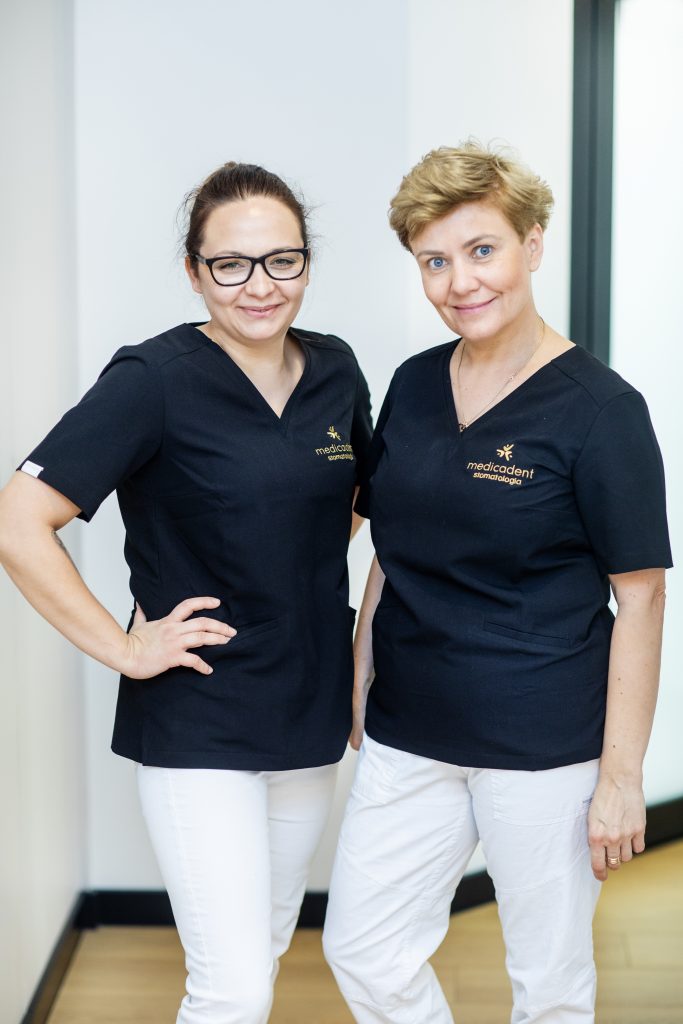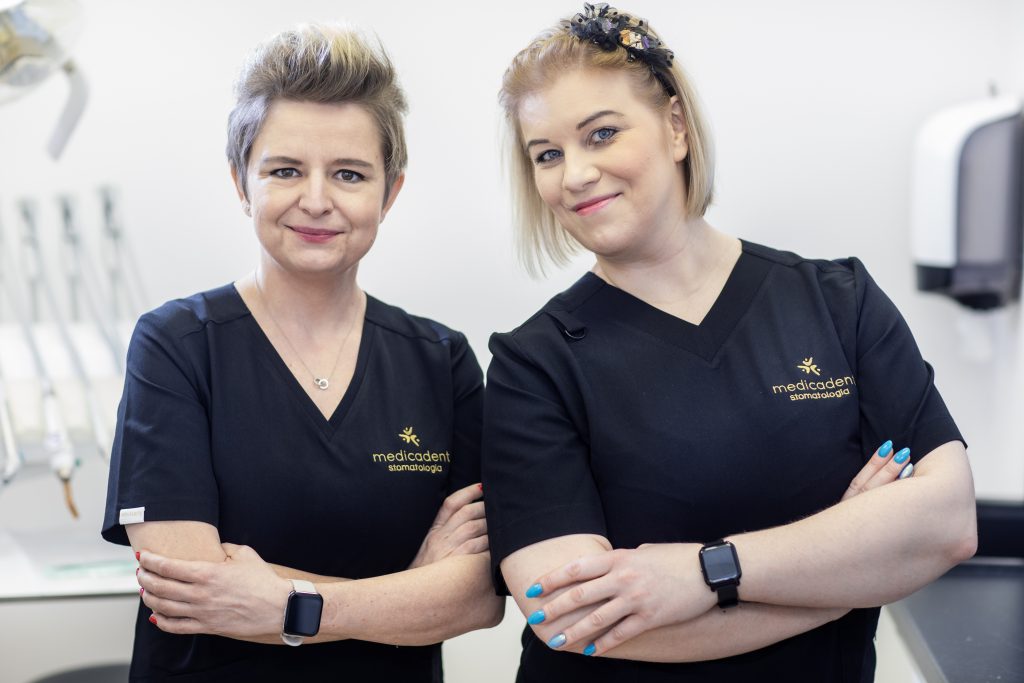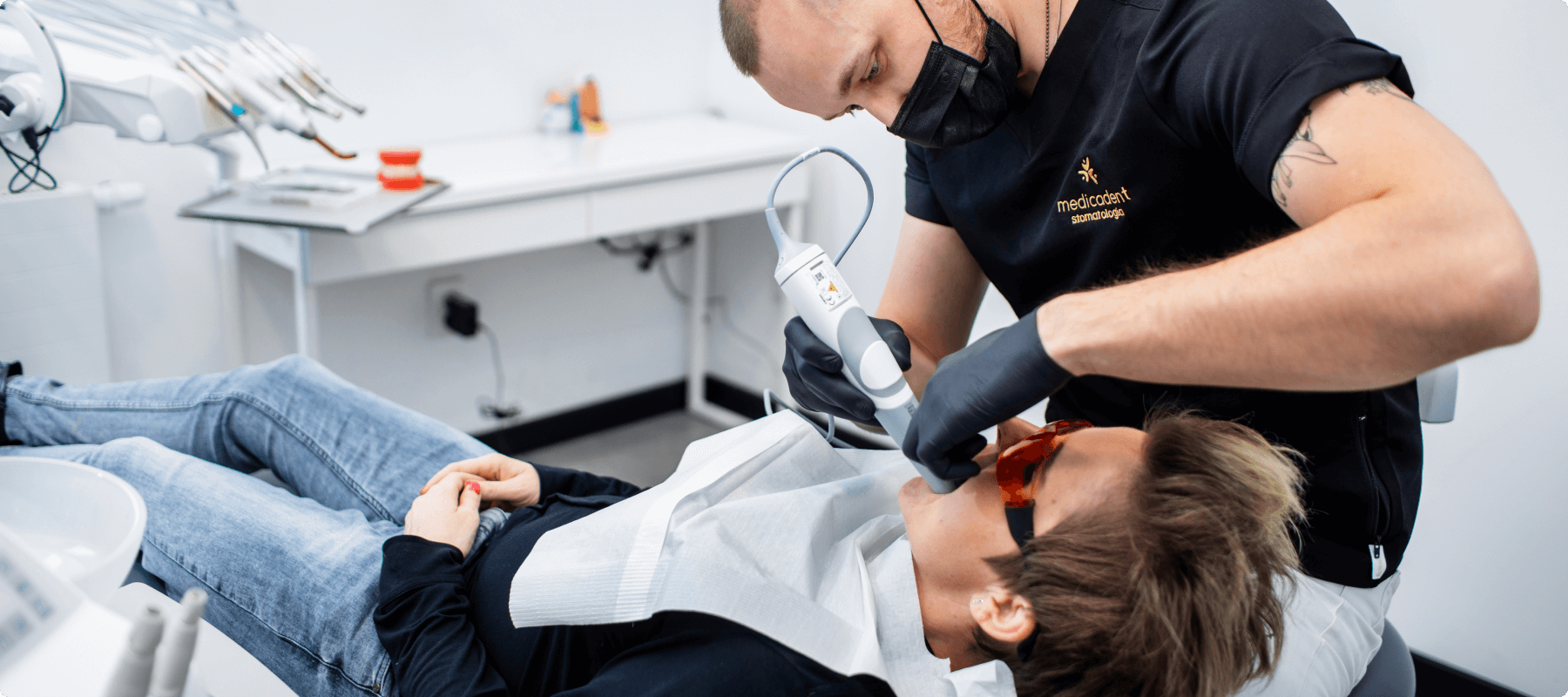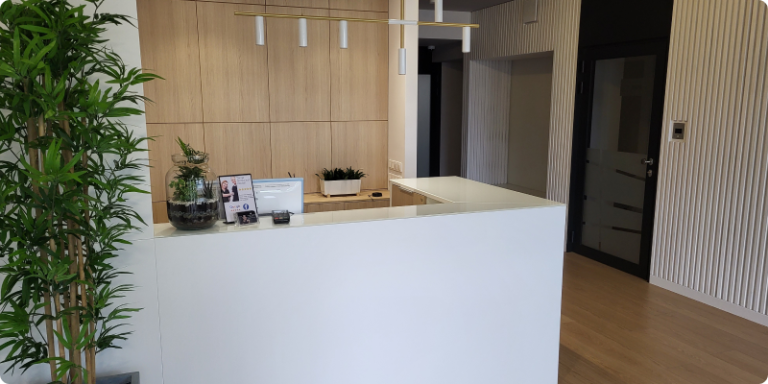An important area of support, offered by Medicadent clinics, is prevention. It is thanks to it that it is possible to counteract the development of diseases of the teeth and gums, and also to develop appropriate habits, allowing to maintain proper oral hygiene.
At the Medicadent clinic, with the health of our patients in mind, we attach great importance to prevention. It has been functioning for a long time.

Preventive treatments performed at the Medicadent clinic:
- Dental and oral checks – during the check-up, the dentist thoroughly examines the patient’s teeth and oral cavity to detect any changes, such as foci of decay or gum disease. During the check, the dentist can also present the patient with the principles of oral hygiene and select the best toothbrush and toothpaste for them. It is recommended to use dental check-ups every 6 months or at another time indicated by the dentist.
- Scaling – this is one of the most important preventive treatments, used to remove tartar and plaque from the surface of the teeth. This is a painless and minimally invasive procedure that takes place using special ultrasonic equipment. During the scaling procedure, our hygienist directs ultrasound onto the tooth surface, causing vibrations and cracking of tartar. Then she removes it using special dental tools. Scaling is an effective method of removing plaque and tartar that allows you to keep your teeth healthy and prevent periodontal disease;
- Sandblasting – this procedure is most often performed together with scaling as part of comprehensive tooth cleaning. For sandblasting, our hygienist uses a special device in which water and dental powder are mixed. This mixture is then directed onto the tooth surface under pressure, which allows the removal of deposits from hard-to-reach places on the tooth surface. Sandblasting is an effective method of removing stains and discolorations, which can be caused by smoking, drinking coffee, tea, or wine.
- Polishing – during polishing, our dental hygienist uses special polishing pastes, brushes, and rubbers that smooth the enamel surface of the teeth, giving them shine and improving their appearance. Polishing is a painless and minimally invasive procedure that is performed after the removal of tartar and sandblasting of teeth.
- Varnishing – this procedure, also known as fluoridation, is performed both in children and adults. It involves the use of special varnishes containing fluoride in the composition, which strengthens tooth enamel and reduces the risk of tooth decay.






